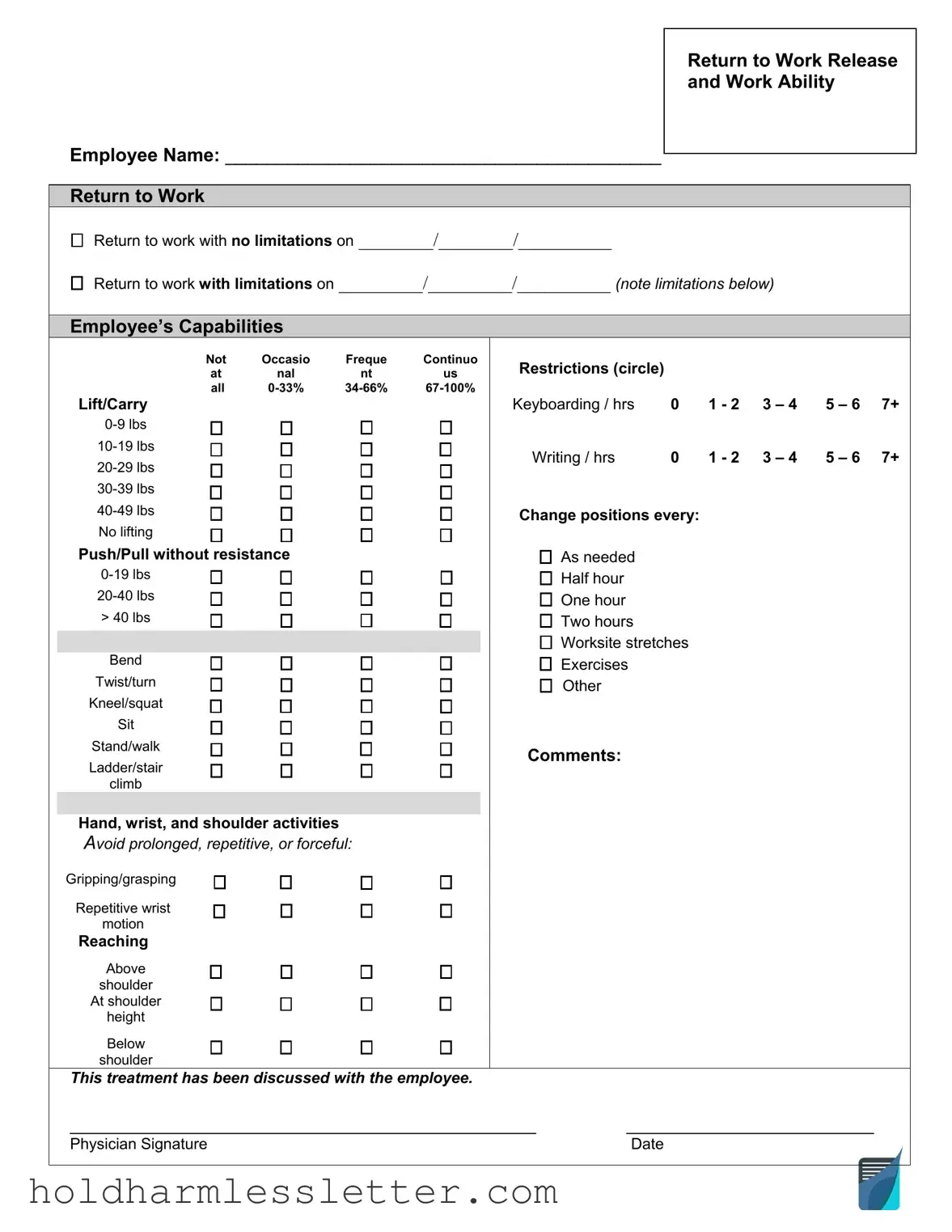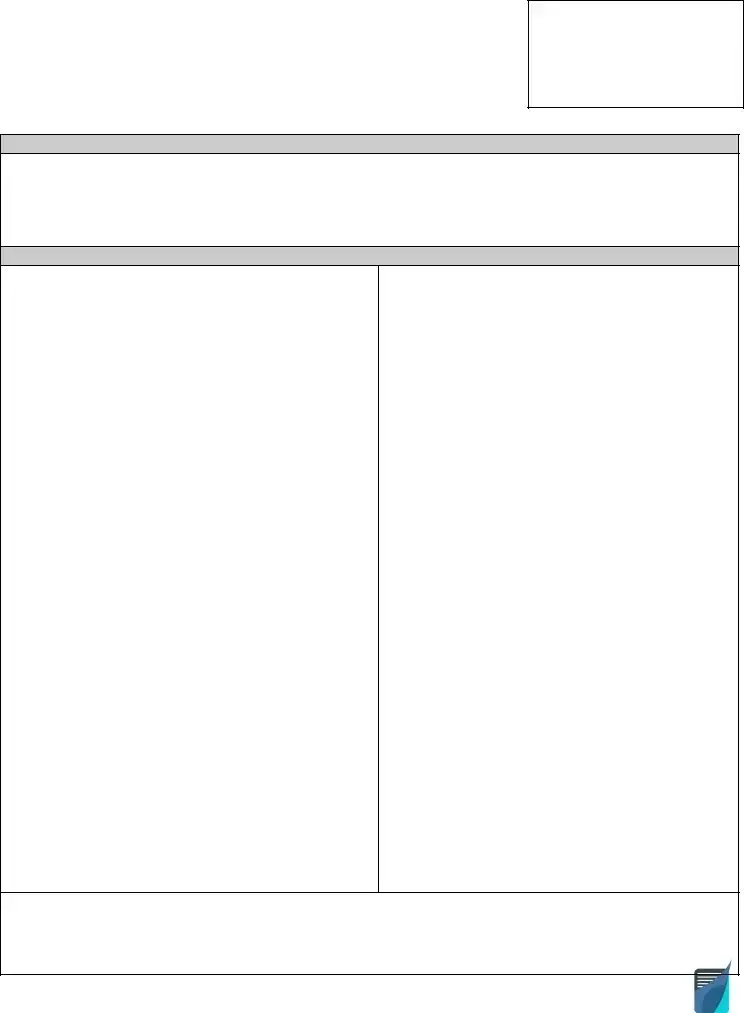A Medical Release Form is similar to a Work Release Form as both involve the sharing of personal information under specific circumstances. The Medical Release Form authorizes healthcare providers to share an individual’s health information, typically to another healthcare provider or a designated person. Like a Work Release Form, it is governed by privacy laws and requires consent from the individual for the release of their information.
A Liability Waiver Form parallels a Work Release Form in its purpose of protecting entities from legal claims. While a Work Release Form may be used to document an employee's ability to return to work, possibly after an injury, a Liability Waiver Form is signed by individuals participating in potentially hazardous activities to relinquish their right to sue the organization in the event of an injury. Both forms serve to limit legal exposure for organizations under specific conditions.
Employment Verification Forms are utilized to confirm an employee's current or past employment status with an employer, which is somewhat akin to Work Release Forms that may confirm an employee's ability to work. Both types of documents are essential in scenarios where verification of employment status or capability is required, such as for loan applications or when transitioning between jobs.
Background Check Authorization Forms bear resemblance to Work Release Forms in the sense that both require the individual's consent to release personal information. Background Check Authorization Forms are used by employers to obtain permission from a job applicant to conduct a background investigation, mirroring how Work Release Forms require an employee's consent to disclose their work capability status.
A Non-Disclosure Agreement (NDA) shares the common theme of confidentiality with a Work Release Form. NDAs are legal contracts that prevent parties from sharing proprietary information, similar to how Work Release Forms handle sensitive medical or personal information that an employee may not want to become public knowledge. Both documents help maintain confidentiality under agreed-upon conditions.
A Consent to Drug Testing Form is another document that, like the Work Release Form, involves personal consent and privacy considerations. It is often required by employers for workplace safety and compliance, certifying that an employee or job applicant agrees to undergo drug testing. Both forms are integral to upholding standards within the workplace and ensuring the well-being of all parties involved.
A Return-to-Work Agreement can be directly compared to a Work Release Form, as both are crucial in the process of reintegrating an employee into the workplace following an absence due to illness or injury. These agreements usually outline the conditions under which an employee can resume work, possibly including modifications or limitations similar to those documented in a Work Release Form.
Power of Attorney Forms, while more expansive, share a resemblance to Work Release Forms through the delegation of authority. A Power of Attorney Form grants one individual the right to make decisions on behalf of another, often in situations where the latter cannot do so themselves. This delegation, akin to the approval process in a Work Release Form, revolves around trust and the permission to act in another's best interest.
A HIPAA Release Form is specifically designed to manage the confidentiality and release of an individual's health information, much like the medical aspect of a Work Review Form. It permits healthcare providers to disclose health information to third parties, dictated by the individual's consent, thereby safeguarding privacy while allowing necessary information to be shared under controlled conditions.

